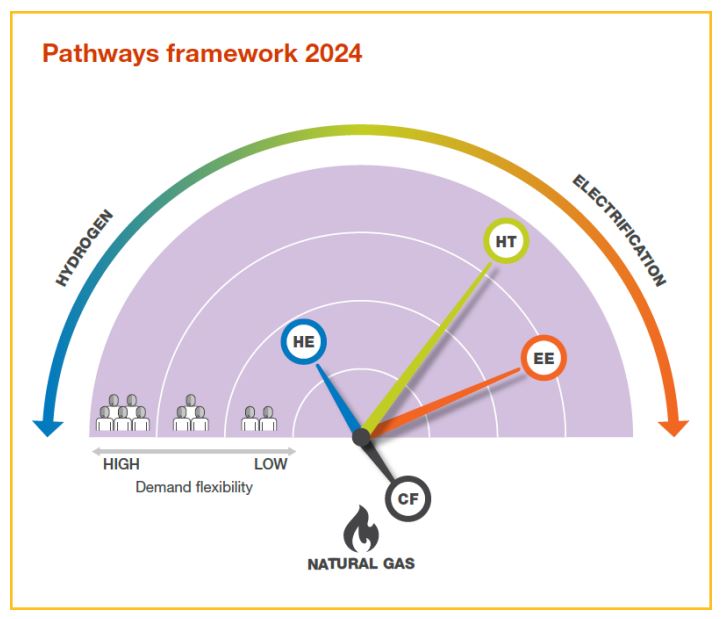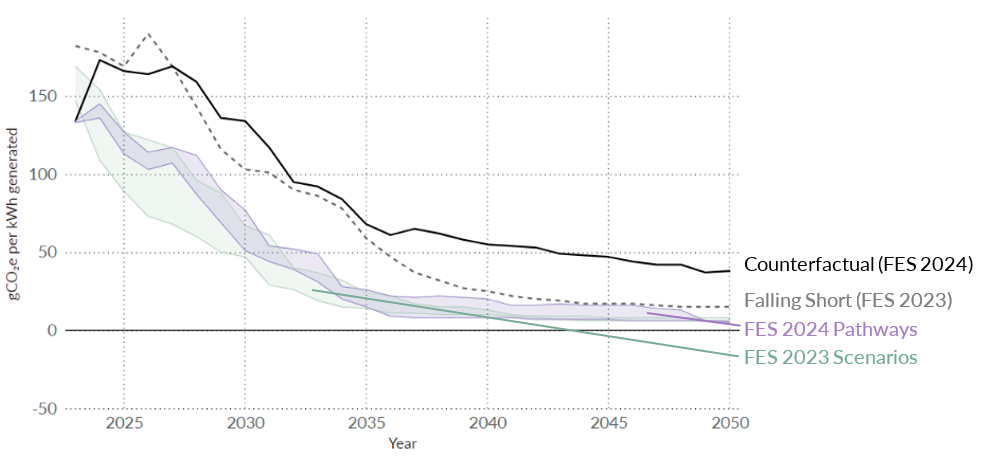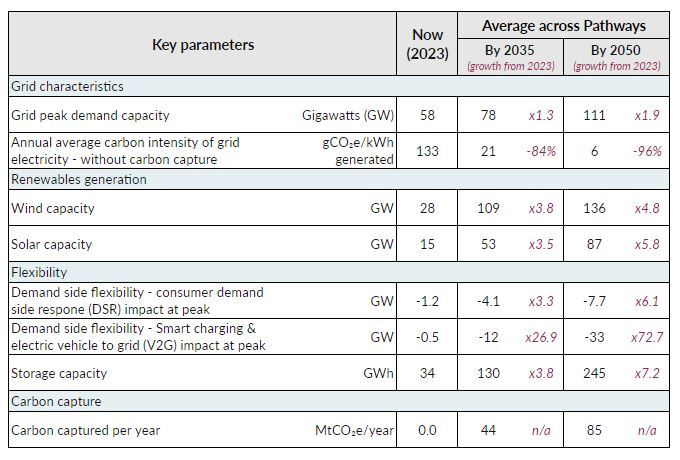FaST work: smart new site-noise tool saves time, money & energy
Additional contributor, Finn McCartneyHill, Senior Energy Consultant.
The latest publication of the Future Energy Scenarios (FES) by the National Grid Electricity System Operator (ESO) sets the tone for the years ahead as it represents a range of credible ways to decarbonise our energy system.
The UK has made great strides in decarbonising our grid, but this path is becoming harder to maintain as the low hanging fruits are removed.
Our analysis of the Future Energy Scenarios leads us to recognise that relying solely on the energy market for decarbonising our energy supply is not a reliable path to delivering net zero for building operations.
The urgent need for our clients to consider generating and storing electricity on-site, providing flexibility and working with the benefits of the grid has never been more critical.

Where previous Future Energy Scenarios looked at exploring a wide range of possible outcomes for how the UK could meet net zero, the new framework seeks to identify narrower, credible and strategic routes for achieving net zero, now called Pathways.
Three Pathways targeting net zero by 2050 puts emphasis on different levels of demand flexibility from users and different engagement towards hydrogen vs electrification.
A fourth Pathway, termed “Counterfactual”, represents a pessimistic scenario that falls short of net zero by 2050.

Historically and up to last year, the actual carbon intensity performance of the grid has often lagged behind the short-term projections of the Future Energy Scenarios by about 10-30%, even in their most pessimistic scenarios. This has led to some scepticism about the speed of decarbonisation: the Royal Institution of Chartered Surveyors (RICS) recommended using the most pessimistic “Falling Short” scenario, excluding the effects of carbon capture, for operational carbon accounting, a stance echoed by other industry stakeholders like the Greater London Authority.
Now that this “Falling Short” scenario has been removed and an even more pessimistic “Counterfactual” pathway has been added, this brings the question of which pathways or methods to utilise for a realistic future carbon intensity of the grid.
More importantly, it underscores the critical urgency of addressing the uncertainty around the future carbon intensity of the grid and the critical need for real estate and asset management decision-makers to avoid relying solely on the grid for decarbonisation of their electricity.
The increased reliance on Bioenergy with Carbon Capture and Storage (BECCS) and Direct Air Carbon Capture and Storage (DACCS) in the report raises significant concerns. Critics have questioned their feasibility, carbon accounting practices, and the very possibility of achieving substantial negative emissions at the envisioned scale. Despite these concerns, BECCS and DACCS remain key mechanisms projected in Future Energy Scenarios to address Great Britain’s grid decarbonisation and to ensure the targets set by the Climate Change Committee in the UK’s Carbon Budget are met.

In October 2021, the UK Government announced its intention for the electricity system to be fully decarbonised by 2035. In both last year’s and this year’s FES reports, this target of a “zero-carbon-intensity grid” has been reflected by resorting to carbon capture and storage as an adjustment variable, even though its viability is still under scrutiny. Moreover, Labour pledged to bring forward this target to decarbonise the UK’s power sector by 2030 – this would mean that the FES would need to incorporate even more aggressive measures and accelerated timelines to meet the new 2030 target.
As its cost mechanisms and implementation strategies are still not fully established, the built environment cannot rely solely on carbon capture and storage to offset the remaining carbon emissions predicted in the UK grid over the long term.
The most innovative building systems will need to store energy, manage demand flexibly, and generate their own energy to relieve pressures on the grid and reduce dependence on costly and uncertain carbon capture technologies.
The Future Energy Scenarios (FES) 2024 provides a comprehensive and quantified framework for the UK’s decarbonisation challenges, emphasising the urgent need for action. National Grid’s message is unequivocal: transformative change is imperative for a sustainable energy future.

The building industry must play a pivotal role in this. By developing on-site solutions and leveraging grid advantages, buildings can significantly reduce grid strain and reliance on carbon capture. The synergy between system-scale solutions and the built environment is crucial for creating a resilient, sustainable energy system.